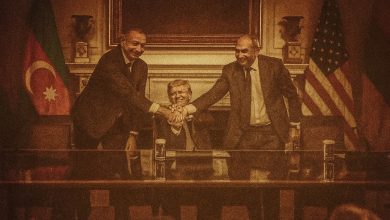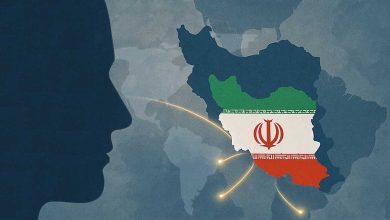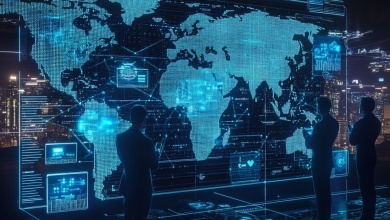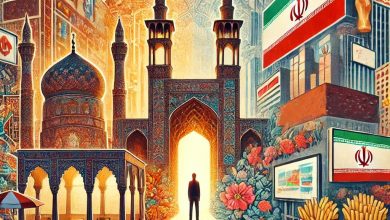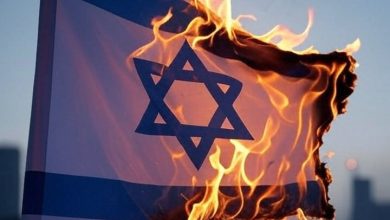The Interplay Between Politics and Economics in Iran: Mutual Influence on Domestic and Foreign Policy

Politics and economics have always maintained a reciprocal relationship, each directly influencing the other. While politics defines the rules, institutions, and processes of public decision-making, economics concerns the allocation of scarce resources and the optimization of social welfare. In development theories, this relationship is known as political economy. In developing countries—where democratic institutions are still in the process of consolidation—this dynamic often takes on a centralized and sometimes tense form.
In Iran, due to the ideological nature of its political system, the characteristics of a state-dominated economy, widespread international sanctions, and its strategic geopolitical position in West Asia, the relationship between politics and economics is not only complex but also critical in shaping both domestic and foreign political behavior.
The Islamic Republic of Iran operates within a unique hybrid structure where both elected and unelected institutions coexist. Entities such as the Supreme Leader, the Guardian Council, the Islamic Revolutionary Guard Corps (IRGC), and the Expediency Discernment Council play central roles in shaping macro-level policymaking. In this framework, decision-making is often driven by security, ideological, and revolutionary considerations—leaving economic priorities secondary.
Iran’s economy can be categorized as a rentier economy heavily reliant on natural resources, especially oil and gas. Key features include extensive state intervention in markets, weak competitive institutions, a burdensome subsidy system, structural corruption, monopolistic tendencies, and the marginal role of a productive private sector in GDP. Sanctions, limited access to global markets, and financial opacity have further exacerbated these conditions.
Domestically, chronic economic crises—such as persistent double-digit inflation, production stagnation, youth unemployment, currency devaluation, and declining household purchasing power—have had a direct impact on political participation, state legitimacy, and social stability. To manage public pressure, governments often resort to populist measures such as direct cash handouts, currency rate controls, and price suppression.
Economic reforms—like subsidy cuts, genuine privatization, or price liberalization—carry heavy political and social costs. These policies have often been met with resistance from vulnerable groups and, in some cases, have triggered widespread unrest (such as the November 2019 protests).
Iran’s economy has also significantly influenced the direction of its foreign policy. A notable example is its fluctuating approach to the nuclear issue and the JCPOA. Economic pressure from U.S. and EU sanctions played a key role in Tehran’s decision to enter negotiations and sign the 2015 agreement.
Conversely, Iran’s regional policies—such as financial and military support for proxy groups—have also been tightly tied to the country’s economic capacity and oil revenues. As foreign currency reserves declined, these regional commitments faced increasing limitations.
Iran’s turn toward deeper strategic relations with Eastern powers like China and Russia, in response to economic isolation caused by Western sanctions, reflects the clear linkage between economic necessity and the reconfiguration of diplomatic alliances.
The reverse direction of influence is equally significant in Iran. Political decisions made without economic expertise have been a major source of structural disruption in various markets. Administrative price and currency controls—without regard for market realities—have created disparities between official and open market rates, fueled rent-seeking, reverse smuggling, and systemic corruption. The “resistance economy” doctrine, promoted by the Supreme Leader as a policy of resilience against external pressures, has in practice often translated into self-sufficiency slogans, isolationism, and disengagement from the global economy—leading to reduced economic efficiency.
Ineffective “quasi-privatization” of state-owned enterprises—intended to maintain the political influence of powerful institutions rather than empower the productive private sector—has perpetuated inefficiency and corruption.
Given Iran’s current economic challenges—including negative growth, capital flight, declining domestic and foreign investment, widening class gaps, and the weakening of middle-class purchasing power—future strategies cannot be based solely on political or security priorities.
Experiences from countries like China and South Korea demonstrate that sustainable economic development requires aligning politics in service of the economy. Policymaking must create favorable legal, security, and diplomatic conditions for production growth, technological advancement, and capital attraction.
Therefore, in the midst of today’s economic crisis, the economy must become the top priority in national strategic planning. Politics should maintain a guiding role but be redefined as a tool for achieving economic goals.
This shift would have tangible effects: domestically, it would lead to the empowerment of independent economic institutions (like the Central Bank), reduction of political interference, infrastructure development, budget transparency, anti-corruption reforms, and a focus on equity-based growth. In foreign policy, it would entail redefining diplomacy based on economic interests rather than purely ideological or security concerns, strengthening economic diplomacy to access markets and international investors, and joining regional economic blocs to enhance bargaining power and reduce vulnerability to sanctions.
The relationship between politics and economics in Iran has historically been asymmetrical and damaging. Political considerations have frequently overshadowed economic logic. But continuing this approach in the current state of crisis threatens not only economic development but also political stability and legitimacy. Today’s economic pressures, negative growth, capital outflow, and public distrust demand a reversal of this trend. The economy must become the central pillar of national strategy. Politics must serve the reconstruction and sustainability of the economy, not dominate it.
The paradigm shift from “politics-driven economics” to “economics-driven politics” is a historical necessity for today’s Iran. In this context, politics must support the reconstruction of economic structures, improve governance efficiency, and facilitate constructive global engagement. Only then can Iran hope to revive its domestic potential, improve quality of life, and reclaim its rightful place in the regional and global economic-political order.


